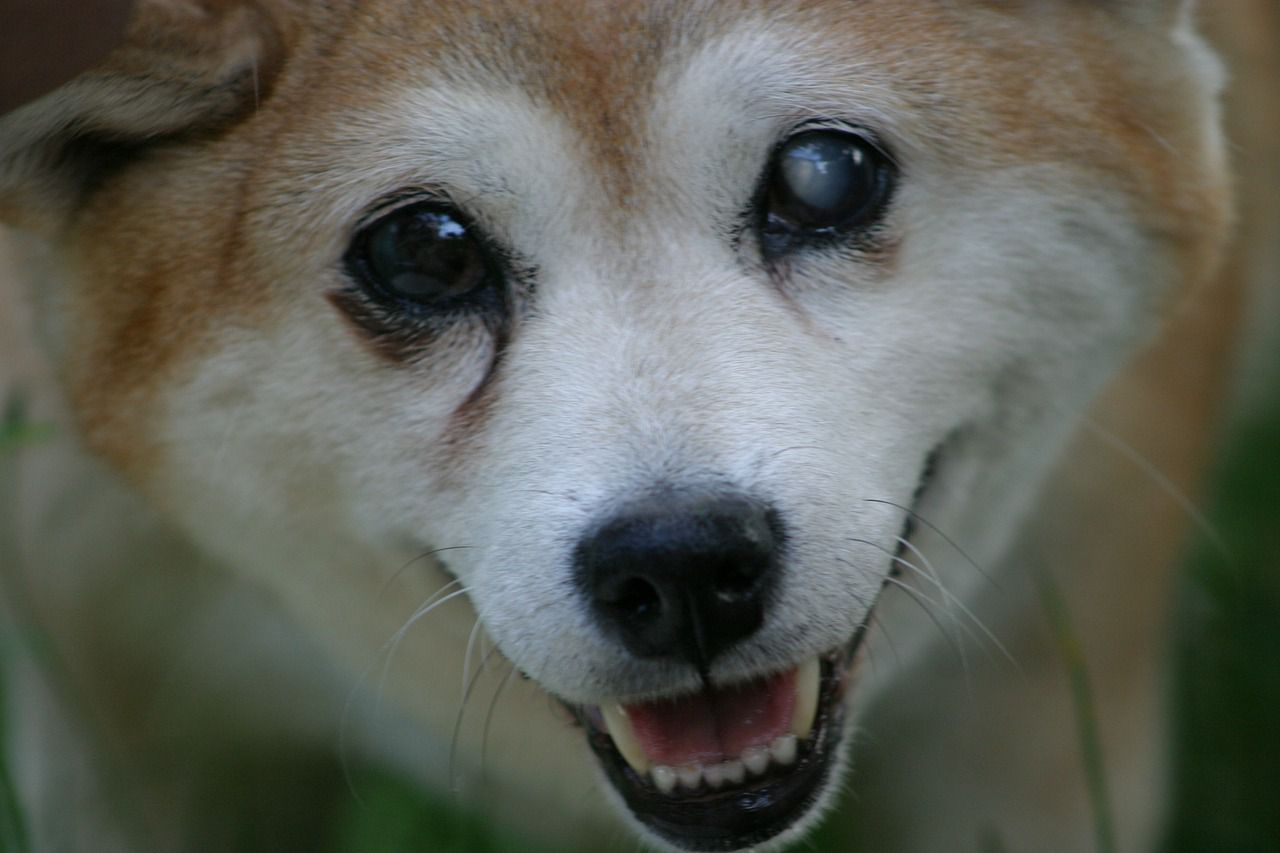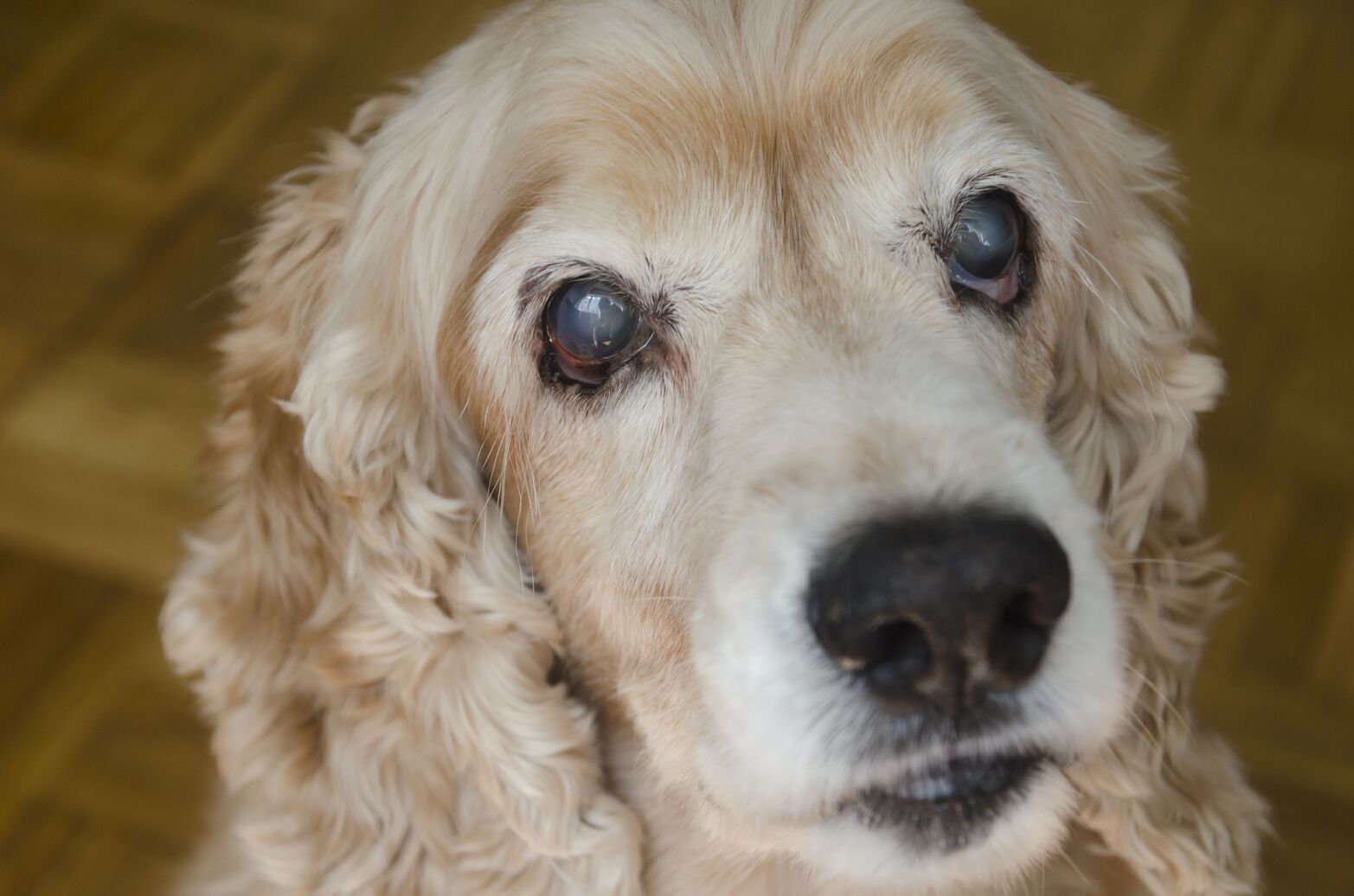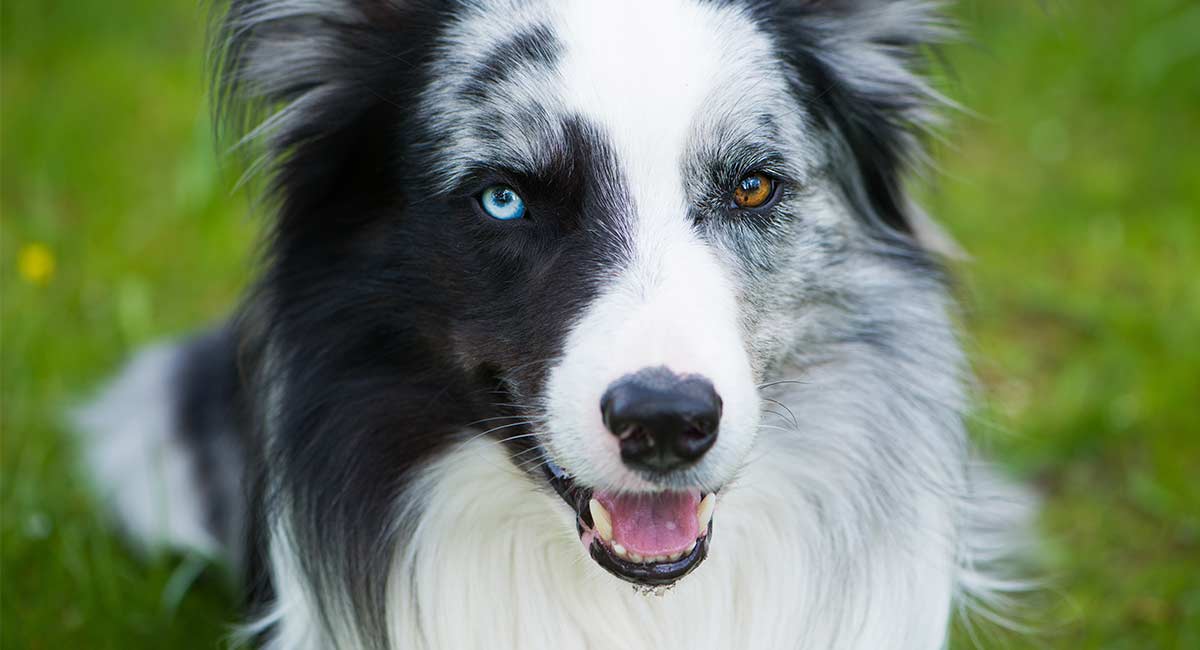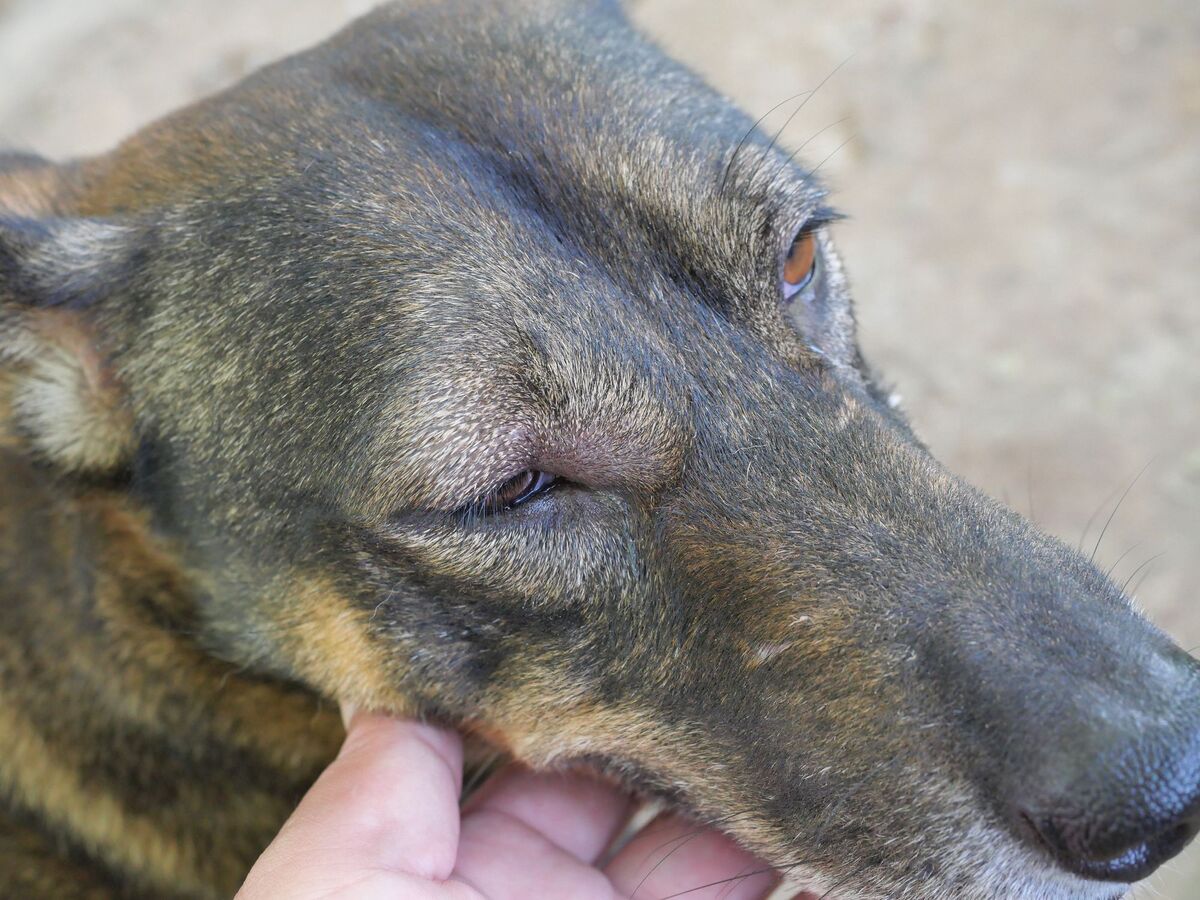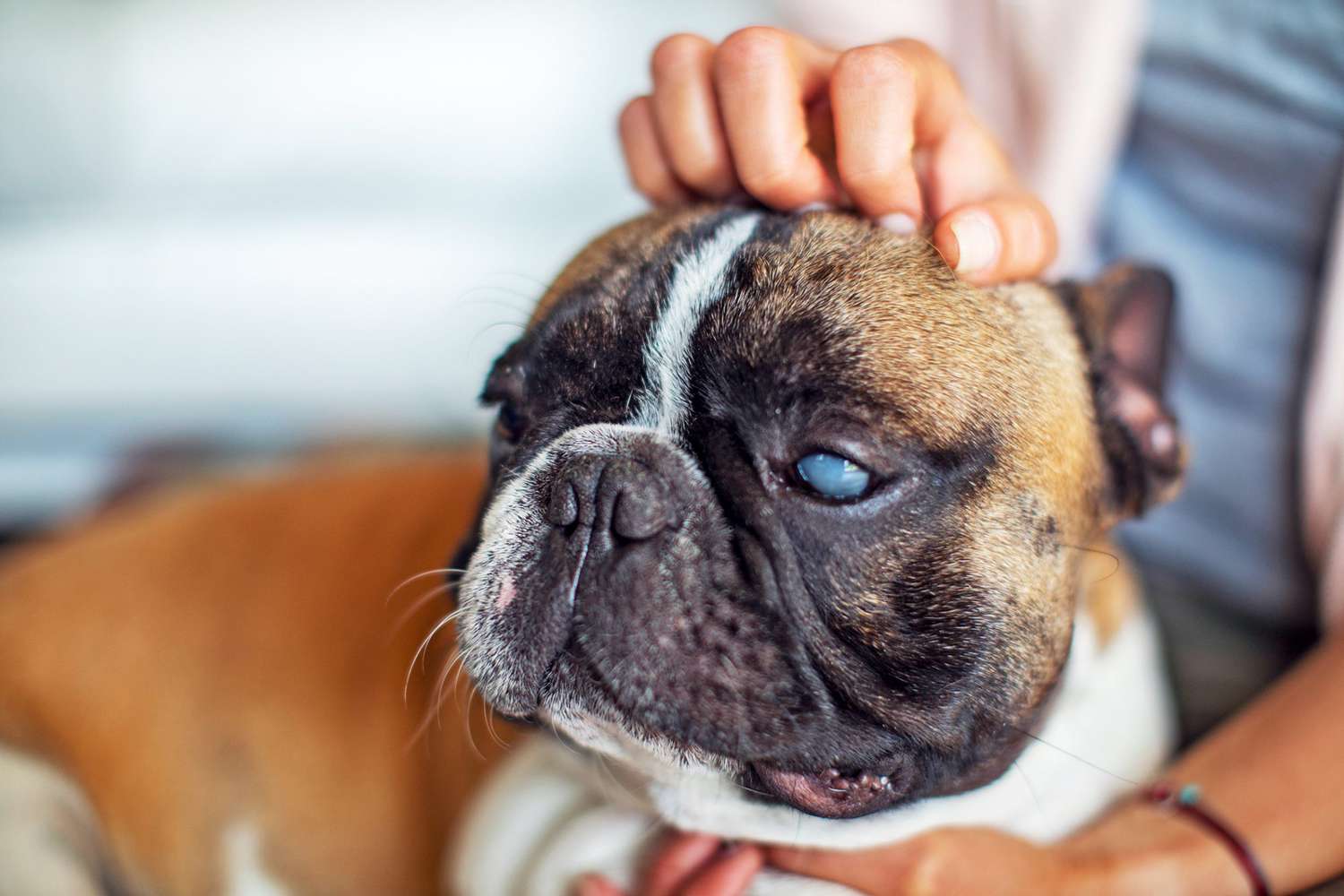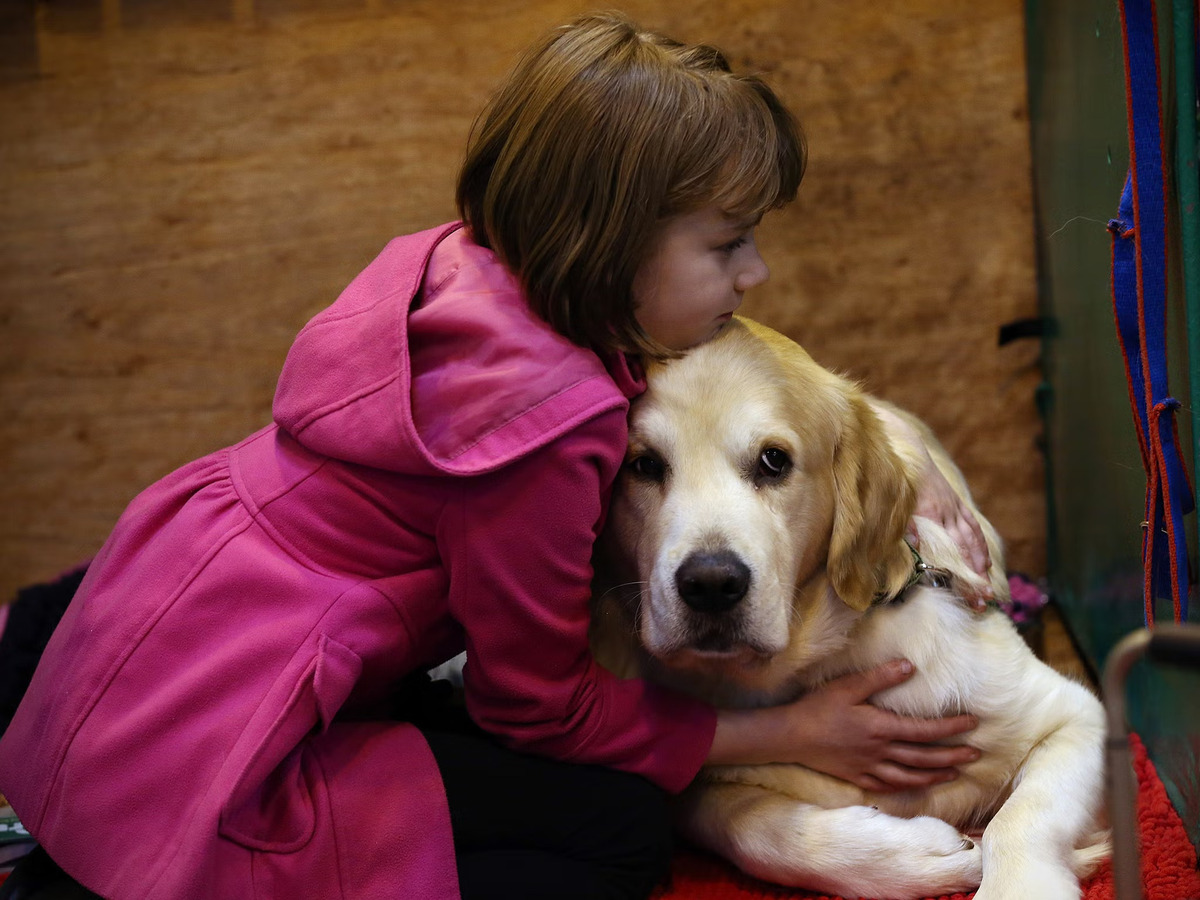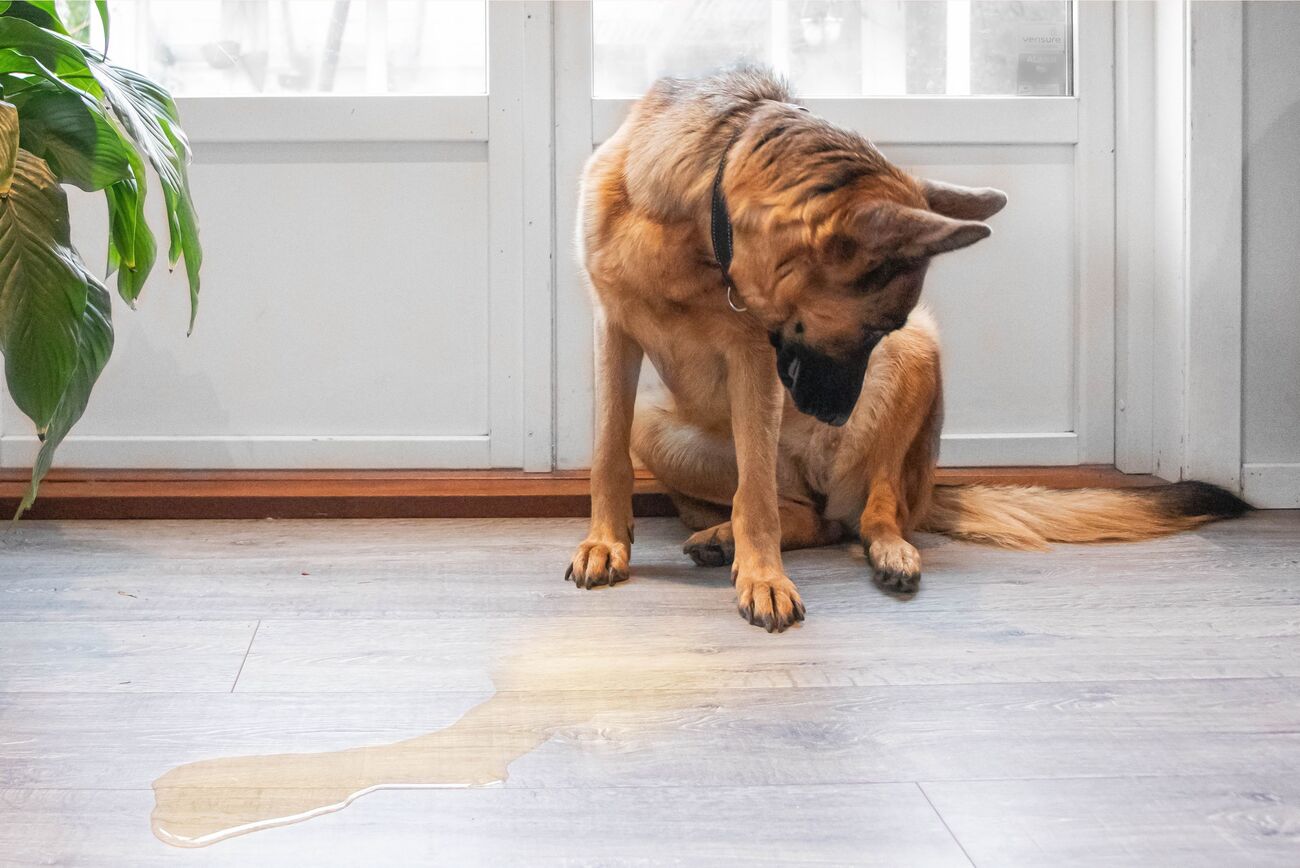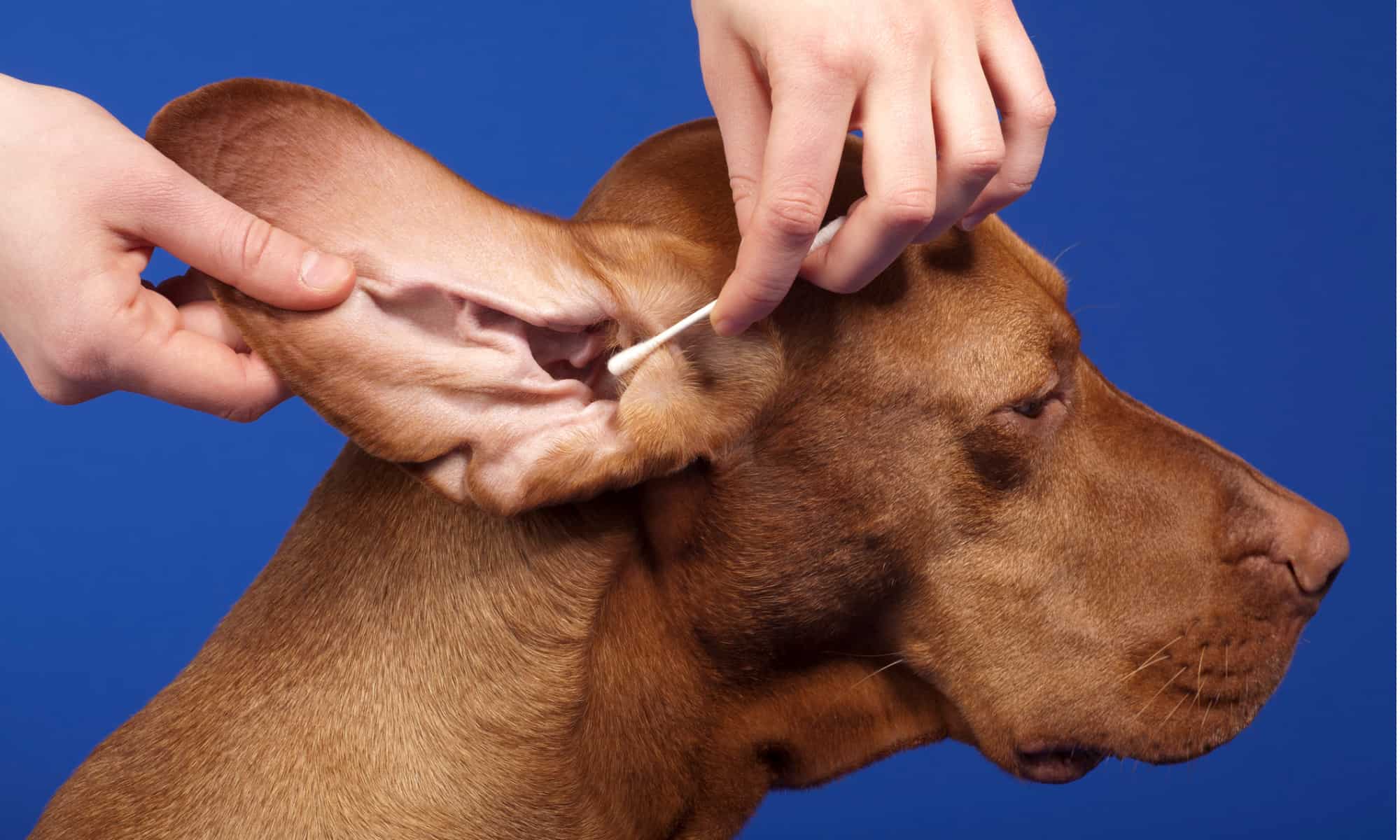Home>Health & Wellness>Common Health Issues>Eye and Ear Health>Why Do Dogs Blink One Eye


Eye and Ear Health
Why Do Dogs Blink One Eye
Published: February 12, 2024
Learn why dogs blink one eye and how it relates to their eye and ear health. Understand the significance of this behavior for your pet's well-being.
(Many of the links in this article redirect to a specific reviewed product. Your purchase of these products through affiliate links helps to generate commission for Pawsomeoldies.com, at no extra cost. Learn more)
Table of Contents
Introduction
Have you ever noticed your furry friend blinking with just one eye? It's a curious sight that might leave you wondering about the reasons behind this behavior. Dogs, like humans, rely on their eyesight to navigate the world around them. Understanding the significance of blinking and the potential implications of one-eyed blinking in dogs can provide valuable insights into their well-being.
In this article, we will delve into the fascinating world of a dog's eye health and explore the reasons behind one-eyed blinking. By unraveling the anatomy of a dog's eye, the purpose of blinking, and potential medical conditions related to this behavior, we aim to shed light on this intriguing phenomenon. Additionally, we will discuss how to address one-eyed blinking in dogs, empowering pet owners with the knowledge to ensure their furry companions' ocular health and overall well-being.
Join us on this enlightening journey as we uncover the mysteries behind one-eyed blinking in dogs and gain a deeper understanding of their ocular health.
Read more: How Will My Dog Do With One Eye?
The Anatomy of a Dog's Eye
The intricate design of a dog's eye is a marvel of nature, finely tuned to facilitate their visual perception and overall well-being. Understanding the anatomy of a dog's eye is crucial in comprehending the complexities behind their ocular functions.
Cornea and Sclera
The outermost layer of a dog's eye consists of the cornea and sclera. The transparent cornea allows light to enter the eye, while the tough sclera provides structural support and protection.
Iris and Pupil
The iris, the colorful part of the eye, regulates the amount of light entering the eye through the pupil. In bright conditions, the pupil constricts to reduce the influx of light, while it dilates in dim lighting to maximize visual input.
Lens and Retina
Behind the iris and pupil lies the lens, which focuses incoming light onto the retina. The retina, akin to the film in a camera, contains photoreceptor cells that convert light into electrical signals, initiating the visual process.
Read more: Why Does My Dog Have One Dilated Eye?
Optic Nerve
The optic nerve transmits these electrical signals from the retina to the brain, where visual information is processed and interpreted.
Eyelids and Tear Glands
The eyelids serve as protective barriers, safeguarding the eye from foreign objects and excessive light. Additionally, tear glands located within the eyelids produce tears, essential for maintaining ocular moisture and clarity.
Extraocular Muscles
A dog's eye is equipped with a network of extraocular muscles that enable precise movement and coordination, allowing them to track objects and perceive their surroundings effectively.
Understanding the intricate anatomy of a dog's eye provides valuable insights into the mechanisms that govern their visual perception. This knowledge forms the foundation for comprehending the significance of blinking and its potential implications in the context of a dog's ocular health.
The Purpose of Blinking
Blinking is a fundamental and involuntary action that serves a crucial purpose in maintaining the health and functionality of a dog's eyes. This seemingly simple act plays a multifaceted role in safeguarding the ocular well-being of our canine companions.
Read more: Why Does My Dog Keep Closing One Eye?
Protection and Moisture
One primary purpose of blinking is to protect the eyes from potential harm. When a dog blinks, the eyelids sweep across the surface of the eye, shielding it from dust, debris, and other foreign particles that may compromise ocular health. Additionally, blinking facilitates the distribution of tears, which serve as a natural lubricant, keeping the eyes moist and preventing dryness.
Spreading Tears
Blinking aids in the even distribution of tears across the surface of the eye. This process ensures that the eyes remain adequately moisturized, promoting optical clarity and comfort. The rhythmic action of blinking helps to prevent the accumulation of excess tears, maintaining a healthy balance of moisture on the ocular surface.
Ocular Health
Beyond its protective functions, blinking contributes to the overall health of a dog's eyes. By blinking, dogs help to remove any residual mucus or discharge, preventing potential ocular irritation and maintaining a clear visual field. Furthermore, blinking facilitates the circulation of tears, which contain essential nutrients and antibodies that support ocular health and combat potential infections.
Regulation of Light
Blinking also plays a role in regulating the amount of light that enters the eyes. In bright environments, frequent blinking helps to reduce the intensity of light reaching the sensitive retinal cells, preventing potential damage. Conversely, in dim lighting conditions, blinking assists in spreading the available light across the retina, optimizing visual perception.
Read more: Why Do Dogs Have Eyelashes
Communication and Comfort
In addition to its physiological functions, blinking can also serve as a form of non-verbal communication and emotional expression in dogs. A slow, deliberate blink may convey a sense of relaxation and contentment, while rapid blinking or prolonged squinting may indicate discomfort or distress.
In essence, blinking is a vital mechanism that contributes to the overall ocular health, comfort, and communication of dogs. Understanding the multifaceted purpose of blinking provides valuable insights into the intricate interplay between this seemingly mundane action and the well-being of our canine companions.
Possible Reasons for One-Eyed Blinking
When observing a dog exhibiting one-eyed blinking, it's natural for pet owners to wonder about the underlying reasons behind this behavior. While occasional one-eyed blinking may not necessarily indicate a cause for concern, it's essential to consider potential factors that could contribute to this phenomenon.
-
Irritation or Discomfort: One of the most common reasons for one-eyed blinking in dogs is ocular irritation or discomfort. Foreign objects, such as dust, hair, or small particles, may come into contact with the surface of the eye, prompting the dog to blink repeatedly in an attempt to alleviate the discomfort. Additionally, minor injuries or scratches to the cornea can lead to localized blinking as the dog attempts to mitigate the discomfort in the affected eye.
-
Allergies and Environmental Factors: Dogs, like humans, can experience allergic reactions to environmental elements such as pollen, dust, or certain chemicals. Allergic conjunctivitis, characterized by inflammation of the eye's outer membrane, can prompt one-eyed blinking as the dog seeks relief from the associated itchiness and irritation.
-
Underlying Health Conditions: Certain underlying health conditions, such as dry eye (keratoconjunctivitis sicca) or conjunctivitis, can manifest as one-eyed blinking in dogs. Dry eye, a condition characterized by insufficient tear production, can lead to ocular discomfort and a propensity for excessive blinking in the affected eye. Similarly, conjunctivitis, an inflammation of the eye's outer membrane, may prompt one-eyed blinking due to the associated discomfort and irritation.
-
Photophobia: Dogs may exhibit one-eyed blinking in response to photophobia, a heightened sensitivity to light. In bright environments, dogs with photophobia may blink more frequently in an attempt to shield the affected eye from excessive light, thereby reducing discomfort and visual strain.
-
Behavioral or Emotional Factors: In some cases, one-eyed blinking in dogs may stem from behavioral or emotional factors. Dogs experiencing stress, anxiety, or discomfort in their surroundings may exhibit one-eyed blinking as a coping mechanism or as a non-verbal expression of their emotional state. Additionally, certain breeds or individual dogs may naturally display asymmetrical blinking patterns without underlying health implications.
It's important to note that while occasional one-eyed blinking may be benign, persistent or pronounced instances of this behavior warrant veterinary attention to rule out potential underlying health issues. By considering these possible reasons for one-eyed blinking, pet owners can remain vigilant and proactive in monitoring their furry companions' ocular health and overall well-being.
Medical Conditions Related to One-Eyed Blinking
When a dog exhibits one-eyed blinking, it can serve as a potential indicator of underlying medical conditions that warrant careful consideration and, if necessary, professional evaluation. While occasional and transient instances of one-eyed blinking may be benign, persistent or pronounced occurrences of this behavior may signify the presence of specific ocular or systemic health issues. Understanding the medical conditions related to one-eyed blinking can empower pet owners to recognize potential red flags and take proactive measures to safeguard their canine companions' well-being.
Ocular Injuries and Irritations
One of the primary medical considerations related to one-eyed blinking in dogs involves ocular injuries and irritations. Foreign objects, such as dust, debris, or small particles, can inadvertently come into contact with the surface of the eye, leading to localized discomfort and prompting the affected dog to exhibit one-eyed blinking. Additionally, minor corneal injuries or scratches, whether due to accidental trauma or environmental factors, can elicit similar blinking patterns as the dog attempts to alleviate the associated discomfort. In such cases, prompt veterinary assessment is crucial to address the underlying cause and prevent potential complications.
Read more: Why Do Dogs Make Eye Contact When They Poop
Dry Eye (Keratoconjunctivitis Sicca)
Dry eye, medically known as keratoconjunctivitis sicca, represents another significant medical condition associated with one-eyed blinking in dogs. This condition arises from insufficient tear production, leading to ocular dryness, discomfort, and a propensity for excessive blinking in the affected eye. Dogs with dry eye may exhibit one-eyed blinking as a manifestation of the associated ocular irritation and the body's attempt to mitigate the discomfort. Left untreated, dry eye can result in corneal damage and compromised ocular health, underscoring the importance of timely veterinary intervention to manage this condition effectively.
Allergic Conjunctivitis
Allergic conjunctivitis, characterized by inflammation of the eye's outer membrane due to allergic reactions, can prompt one-eyed blinking in affected dogs. Environmental allergens such as pollen, dust, or certain chemicals can trigger allergic responses, leading to itchiness, redness, and ocular discomfort. Dogs experiencing allergic conjunctivitis may exhibit one-eyed blinking as a reflexive response to the associated irritation and itchiness. Identifying and addressing the underlying allergens, along with appropriate veterinary guidance, is essential in managing allergic conjunctivitis and alleviating the accompanying symptoms.
Conjunctivitis and Ocular Infections
Conjunctivitis, an inflammation of the eye's outer membrane, and other ocular infections represent potential medical conditions linked to one-eyed blinking in dogs. Bacterial, viral, or fungal infections can lead to ocular discomfort, redness, and discharge, prompting affected dogs to exhibit one-eyed blinking as a response to the associated irritation. Prompt veterinary assessment and targeted treatment are crucial in addressing conjunctivitis and ocular infections, mitigating discomfort, and preventing potential spread or complications.
Underlying Systemic Health Issues
In some instances, one-eyed blinking in dogs may be indicative of underlying systemic health issues that extend beyond ocular concerns. Systemic conditions such as neurological disorders, pain, or metabolic imbalances can manifest as altered blinking patterns and ocular discomfort. Identifying and addressing these underlying systemic issues through comprehensive veterinary evaluation and diagnostic procedures is essential in ensuring the holistic well-being of affected dogs.
By recognizing the potential medical conditions related to one-eyed blinking in dogs, pet owners can remain vigilant and proactive in monitoring their furry companions' ocular health. Timely veterinary assessment and targeted interventions play a pivotal role in addressing underlying health issues, promoting ocular well-being, and nurturing the overall health of dogs exhibiting one-eyed blinking.
Read more: Why Does One Of My Dogs Have More Fleas?
How to Address One-Eyed Blinking in Dogs
When a dog exhibits one-eyed blinking, attentive and proactive measures are essential to address this behavior and ensure the well-being of our canine companions. Understanding the potential underlying causes and appropriate steps to address one-eyed blinking empowers pet owners to take decisive actions in safeguarding their furry friends' ocular health.
-
Veterinary Evaluation: Upon observing one-eyed blinking in a dog, seeking prompt veterinary evaluation is paramount. A comprehensive ocular examination by a qualified veterinarian can help identify potential underlying medical conditions, such as ocular injuries, dry eye, allergic reactions, or infections. Through specialized diagnostic procedures and ocular assessments, veterinarians can pinpoint the root cause of the one-eyed blinking and formulate targeted treatment plans.
-
Treatment Protocols: Based on the findings of the veterinary evaluation, tailored treatment protocols may be recommended to address the specific underlying cause of one-eyed blinking. For instance, ocular injuries may necessitate topical medications or protective measures to facilitate healing and alleviate discomfort. In cases of dry eye, prescribed artificial tears or medications aimed at stimulating tear production may be employed to restore ocular moisture and comfort. Allergic conjunctivitis and ocular infections may require targeted therapies to mitigate inflammation, manage symptoms, and combat underlying pathogens.
-
Environmental Modifications: Assessing and modifying the dog's living environment can contribute to addressing one-eyed blinking. Minimizing potential sources of ocular irritation, such as dust, smoke, or airborne allergens, can help alleviate discomfort and reduce the frequency of one-eyed blinking episodes. Creating a clean and allergen-controlled living space can support ocular health and overall well-being.
-
Ocular Hygiene and Care: Implementing proper ocular hygiene and care practices is crucial in managing one-eyed blinking in dogs. Regularly cleaning the dog's eyes with veterinarian-approved solutions can help remove debris, discharge, and potential irritants, promoting ocular comfort and minimizing the likelihood of one-eyed blinking due to ocular irritation.
-
Compliance and Follow-Up: Adhering to the prescribed treatment regimens and veterinary recommendations is essential in addressing one-eyed blinking effectively. Pet owners should diligently administer medications, follow ocular care protocols, and monitor their dog's response to the interventions. Additionally, scheduled follow-up appointments with the veterinarian enable ongoing assessment of the dog's ocular health and the adjustment of treatment strategies as needed.
By proactively addressing one-eyed blinking in dogs through veterinary evaluation, targeted treatments, environmental modifications, ocular hygiene practices, and diligent compliance, pet owners can play a pivotal role in promoting their furry companions' ocular well-being and overall quality of life. Timely intervention and attentive care contribute to mitigating ocular discomfort, addressing underlying health issues, and nurturing the optimal ocular health of dogs exhibiting one-eyed blinking.
Conclusion
In conclusion, the enigmatic phenomenon of one-eyed blinking in dogs encompasses a spectrum of potential reasons, ranging from benign behavioral patterns to indicators of underlying ocular and systemic health issues. The intricate anatomy of a dog's eye, comprising the cornea, iris, lens, retina, and associated structures, underscores the complexity and significance of ocular health in canine companions. Blinking, a fundamental and multifaceted action, serves as a vital mechanism for protecting, moisturizing, and regulating light for a dog's eyes, while also conveying non-verbal cues and contributing to their overall ocular health and comfort.
When observing one-eyed blinking in dogs, pet owners are encouraged to consider various factors, including ocular irritation, allergies, underlying health conditions, photophobia, and emotional or breed-specific patterns. While occasional one-eyed blinking may be innocuous, persistent or pronounced instances of this behavior warrant vigilant attention and, if necessary, professional veterinary assessment to rule out potential underlying health issues.
The potential medical conditions related to one-eyed blinking, such as ocular injuries, dry eye, allergic conjunctivitis, infections, and systemic health issues, underscore the importance of timely veterinary evaluation and targeted interventions. By recognizing the red flags associated with one-eyed blinking and taking proactive measures, pet owners can play a pivotal role in safeguarding their furry companions' ocular health and overall well-being.
Addressing one-eyed blinking in dogs necessitates a comprehensive approach, encompassing veterinary evaluation, tailored treatment protocols, environmental modifications, ocular hygiene practices, and diligent compliance. Through these concerted efforts, pet owners can contribute to mitigating ocular discomfort, addressing underlying health issues, and nurturing the optimal ocular health of their beloved canine companions.
Ultimately, the enigma of one-eyed blinking in dogs serves as a poignant reminder of the intricate bond between humans and their furry friends. By unraveling the mysteries behind this behavior and taking proactive steps to ensure ocular health, pet owners can further enrich the lives of their canine companions, fostering a harmonious and nurturing environment where their beloved pets can thrive and flourish.

